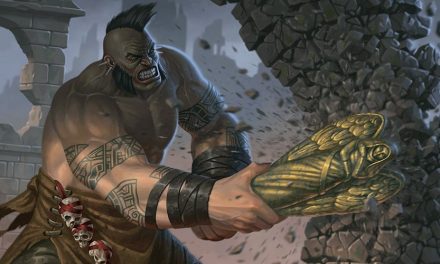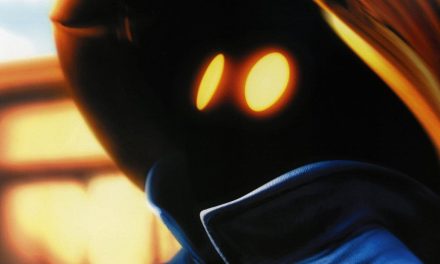Do you want to play a Warlock but want to be up close to the action in combat? Does the idea of inflicting powerful curses upon your enemies then bringing the pain with a powerful weapon from the Shadowfell appeal to you?
Look no further than the Hexblade Warlock!
If the Hexblade isn’t the most popular Warlock option, it’s certainly up there! Not only is it a powerful subclass, but it also does a lot to play with the typical role of Warlocks in 5e.
So let’s get right into it with this full guide to the Hexblade Warlock in D&D 5e!
What is the Hexblade Warlock in D&D 5e?
The Hexblade is a Warlock subclass that was introduced to 5e in Xanathar’s Guide to Everything.
Where most Warlocks tend to function as a “blaster” type character, Hexblades prefer to get up close and personal. They’re powerful frontline combatants who use a devastating mix of curses, melee prowess, and arcane abilities to further their patron’s agenda.
While some might think that the Hexblade has made their pact with a magic weapon itself, they have actually made their pact with the mysterious force behind the weapon.
Because the force behind such weapons comes from the Shadowfell, the Raven Queen is the most common patron of Hexblade Warlocks. The power she grants Warlocks in her service allows them to manifest dark energies into powerful weapons and devastating curses.
Related: The Ultimate Guide to Warlock Patrons in D&D 5e
Role in the Party
The Hexblade is all about putting out as much damage as possible. They’re generally a frontline melee combatant for the party but still have access to Warlock spells to make them even more of a threat to enemies.
In many ways, you can think of the Hexblade as the Warlock’s answer to the Paladin class. However, instead of taking an oath, the Hexblade has made a pact and uses Arcane magic instead of Divine magic.
Hexblades’ focus on damage output makes for a strong aggressive subclass option. Whether you’re hacking, slashing, or blasting your enemies to bits, you’ve got plenty of hard-hitting options to help you.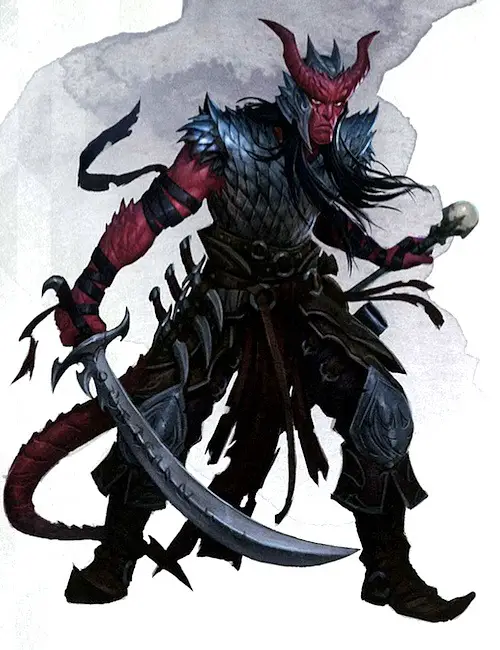
Hexblade Warlock Features in D&D 5e
Now that we’ve gone over what the Hexblade is and their role in the party, let’s get into the nuts and bolts of this subclass.
The Hexblade’s subclass features focus on an aggressive playstyle though you’ll also gain some defensive abilities.
Expanded Spell List
First up, we have the Hexblade’s expanded spell list.
These spells are meant to enhance your ability as a frontline combatant.
The biggest thing that you’ll want to be aware of is that most of these spells require you to maintain concentration. This means you’ll want to choose and use your spells wisely!
I’d recommend also checking out my article covering how concentration works since it’s so important to playing a Hexblade right!Spell Level Spells 1 Shield, Wrathful Smite 2 Blur, Branding Smite 3 Blink, Elemental Weapon 4 Phantasmal Killer, Staggering Smite 5 Banishing Smite, Cone of Cold
Level 1 Spells
Shield can be useful in emergency situations and is generally viewed as a must-have spell by most casters. Unfortunately, you have limited spell slots and there’s no benefit for casting it at a higher level which means you’ll be dropping Shield pretty quickly.
Wrathful Smite is a decent low-level option to add some extra bite to your melee attacks if you are able to maintain concentration. If you’re feeling spicy, Wrathful Smite can make a great combo with the Booming Blade cantrip.
Level 2 Spells
Blur is a great defensive spell that is especially useful if you’ve got multiple enemies trying to gang up on you. Be mindful that it requires concentration and it can save your life!
You can get some decent use out of Branding Smite in certain situations. The extra Radiant damage is nice and can be extra useful against certain creatures like Shadows or vampires. Additionally, creatures that like to go invisible won’t be able to do so while affected by Branding Smite.
It’s a bit niche, but a solid addition to your list. As with the other smites, just be aware of the concentration requirement.
You Might Like: The Complete Class Guide to the Warlock in D&D 5e!
Level 3 Spells
The random aspect of the Blink spell means that it can be either very useful or total garbage. The simple fact is that you don’t have many spell slots as a Warlock and you need to take spells that are dependable. In most cases, you should skip this one.
Elemental Weapon is a bit of an odd option here. The weapon you cast this on becomes magical, gains a bonus to attack rolls, and deals extra damage of your chosen elemental type.
You are able to use the Elemental Weapon spell on your Pact Weapon granted by the Pact of the Blade. This is because your Pact Weapon specifically “counts as a magical weapon for the purpose of overcoming damage resistance and immunity” but is not explicitly magical.
Where the Elemental Weapon spell suffers, though, is its concentration requirement. This doesn’t play well with your smites and defensive spells.
If you know you’re about to go against an enemy with a specific elemental weakness, this might be worth taking. Otherwise, I’d generally recommend skipping this one too.
Level 4 Spells
On a creature with low Wisdom, Phantasmal Killer can be a death sentence. Not only are they frightened, but they’re also taking psychic damage each round until they make their save or the spell ends.
It won’t scale beyond level 5 for you, but it’s still a decent option to keep in your back pocket.
Staggering Smite is a so-so spell. The biggest weakness here is that the creature you hit with it only has to deal with the effects until the end of its next turn. However, you do get to add a decent chunk of extra damage upfront without having to worry about them making a save like with Phantasmal Killer.
Between the two, I’m personally more partial to Phantasmal Killer. It’s a little riskier but can deal some truly disgusting damage in the long run. If you want something a bit safer, Staggering Smite isn’t a bad option.
Level 5 Spells
Both of your level 5 spells are fantastic.
Banishing Smite throws down some big boy damage while also potentially banishing the creature to a different plane.
In the case of something like a demon from a different plane than what you’re on (assuming you’re currently on the Material Plane), it’s sent back home.
If the creature is from your current Plane, they’re still out of the combat for up to a minute which gives you and your allies plenty of time to act strategically. It’s plenty of time to do some quick healing and ready some actions so that you can dogpile them the second they return from their banishment.
Meanwhile, Cone of Cold deals high damage in a large 60-foot cone. If you can line up your enemies just right, it can be completely devastating.
Hexblade’s Curse (Level 1)
The Hexblade’s features start with a bang at level 1 with Hexblade’s Curse.
As a bonus action, choose one creature you can see within 30 feet of you. The target is cursed for 1 minute.
The curse ends early if the target dies, you die, or you are incapacitated.
Until the curse ends, you gain the following benefits:
- You gain a bonus to damage rolls against the cursed target. The bonus equals your proficiency bonus.
- Attack rolls you make against the cursed target are critical hits on a roll of 19 or 20.
- If the cursed target dies, you regain hit points equal to your Warlock level + your Charisma modifier (minimum of 1.)
There’s a lot here, so let’s break it down.
Hexblade’s Curse is a bonus action which means you can put the curse on an enemy right before using your action to start getting the benefits right away.
Keep in mind that Hexblade’s Curse works with more than just your melee attacks. There might be some situations where you’ll want to throw an Eldritch Blast at your cursed target. In fact, Hexblade’s Curse applies to each of the attacks from Eldritch Blast which gives it a ton of extra value!
You’re dealing extra bonus with your attacks equal to your proficiency bonus which will increase as you continue to level up. What’s more, you have an even better chance to land a critical hit against a cursed target!
You may not be recovering a huge amount of hit points from this ability, but it’s still more than enough to keep you going!
This feature can be used once per short or long rest. That might seem limiting, but Warlocks require lots of short rests anyways so you should be fine!
Stacking Curses
It’s worth noting that the Hexblade’s Curse feature does not require concentration. However, the Hex spell does. It can be easy to mix these up and realistically Hex is a great spell to add to your list!
This means that you are able to stack Hex and Hexblade’s Curse.
If you really want to get crazy with it, you could even add Bestow Curse (as a 5th level spell if you’re able to pick it up via multiclassing or another way) to the mix to completely ruin your enemy’s day.
Once again, just be aware that your smites are concentration spells. If you have cast Hex on a creature then go for a smite, the hex will end!
Hex Warrior (Level 1)
As a frontline combatant, the Hexblade is tougher than the average Warlock thanks to the Hex Warrior feature.
You gain proficiency with medium armor, shields, and martial weapons.
Not bad at all, but there’s more to it than that! Your patron has an extra gift for you…
Whenever you finish a long rest, you can touch one weapon that you are proficient with and that lacks the two-handed property.
When you attack with that weapon, you can use your Charisma modifier instead of Strength or Dexterity for the attack and damage rolls.
This benefit lasts until you finish a long rest.
If you later gain the Pact of the Blade feature, this benefit extends to every pact weapon you conjure with that feature, no matter the weapon’s type.
Charisma is your most important ability score as a Warlock and now it powers your melee attacks!
It’s still worth investing in your Dexterity score (though the limits on Medium armor mean there’s no real reason to have a Dexterity score higher than 14). If you’re so inclined, Strength could even be your dump stat now!
If you plan on dual-wielding as a Hexblade, Hex Warrior combines with the Pact of the Blade feature to effectively allow you to have two weapons that use your Charisma to attack.
Accursed Specter (Level 6)
When you hit level 6 as a Hexblade Warlock, your patron teaches you how to make friends.
Like… literally make friends… out of the souls of your slain enemies…
Okay, maybe it’s an unconventional approach but I’m not judging!
Jokes aside, though, this is one of the more interesting Hexblade features. Unfortunately, it’s the only one that’s a little awkward in practice.
When you slay a humanoid, you can cause its spirit to rise from its corpse as a specter. When the specter appears, it gains temporary hit points equal to half your Warlock level.
Roll initiative for the specter, which has its own turns. It obeys your verbals commands and gains a special bonus to its attack rolls equal to your Charisma modifier (minimum of +0).
The specter remains in your service until the end of your next long rest, at which point it vanishes to the afterlife.
Once you bind a specter with the Accursed Specter feature, you can’t use the feature again until you finish a long rest.
As for the specter’s stats, you can find those in the Monster Manual. It will be fairly helpful in combat for a while but it doesn’t exactly scale as you continue to level up. Eventually, it will be more of a scout than anything.
You’ll want to be mindful of the specific wording and limitations of this feature. It has to be a humanoid and you have to have been the one who dealt the final blow. If both of those criteria are met, you’ll have a spooky new friend!
Related: Specters and Poltergeists in D&D 5e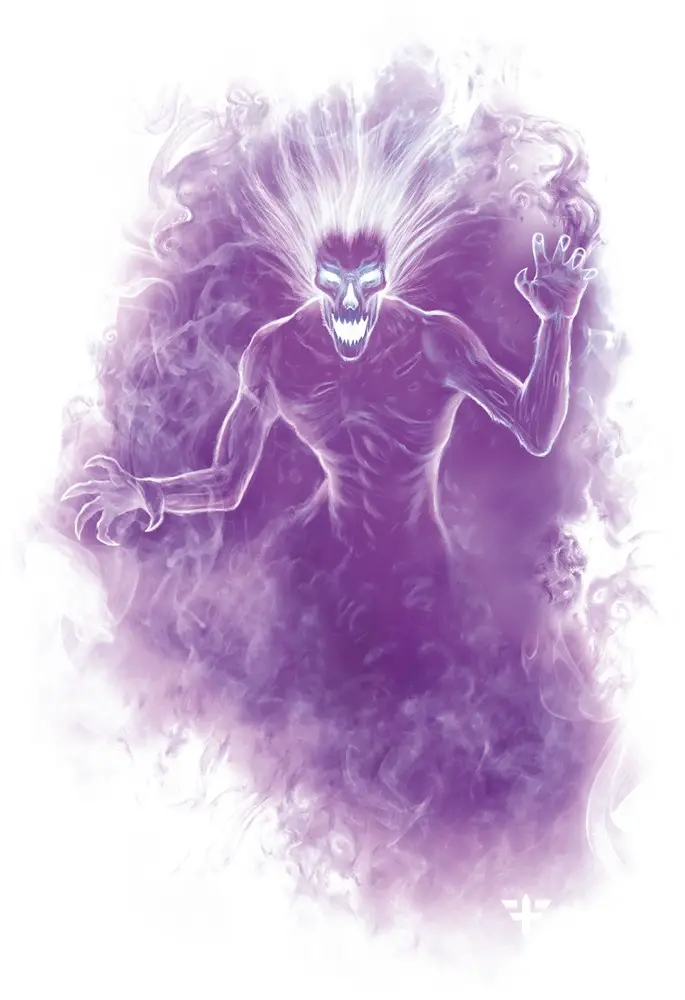
Armor of Hexes (Level 10)
At level 10, you get a handy defensive buff: Armor of Hexes.
If the target cursed by your Hexblade’s Curse hits you with an attack roll, you can use your reaction to roll a d6. On a 4 or higher, the attack misses you, regardless of its roll.
This is so good that it’s almost broken. Your Hexblade’s Curse is now even more devastating to opponents!
If the enemy is able to get past your Armor Class and spells like Blur, you still have a 50% chance for them to miss you. Considering it only costs your reaction, this is an incredible buff to the already impressive Hexblade’s Curse.
Master of Hexes (Level 14)
The Hexblade Warlock’s capstone feature buffs your Hexblade’s Curse even further.
When a creature cursed by your Hexblade’s Curse dies, you can apply the curse to a different creature you can see within 30 feet of you, provided you aren’t incapacitated.
When you apply the curse in this way, you don’t regain hit points from the death of the previously cursed creature.
The biggest (and honestly ONLY) downside to the Hexblade’s Curse feature is that it could potentially feel wasted. Generally, you’d want to throw it on the biggest threat to help you take them down. But what if there’s an even bigger threat around the next corner and you haven’t taken a rest?
Now, your curse passes from creature to creature. You can throw your curse on one of the weaker enemies, focus them down, and then move the curse to the next one.
It might sound like a small buff, but it has major implications. You’ll virtually always be running at peak performance in combat with your Hexblade’s Curse out now!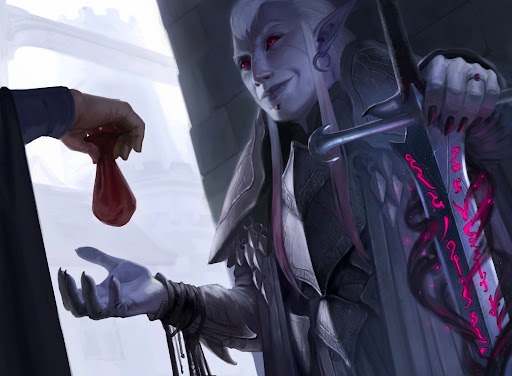
Pact Boons for Hexblade Warlocks 5e
As with all Warlocks, Hexblades choose a Pact Boon at level 3.
The Pact Boon that you choose determines what kinds of Eldritch Invocations are available to you and gives you some extra abilities. Each Pact Boon focuses on a different role that your Warlock can play within the party.
This is actually a pretty big decision that you have to make.
To learn all about Pact Boons and how they work, I recommend checking out my article that fully covers them here. There’s a lot to them that you need to be aware of that’s out of the focus of this subclass guide.
For now, we’re going to look at a quick overview of each of the Pact Boon options and how they relate to Hexblade Warlocks.
Realistically, however, there’s really one option that needs to be considered for most Hexblades.
Pact of the Blade
The synergy here is through the roof. Realistically, the Pact of the Blade will be your go-to Pact Boon option as a Hexblade.
Be sure to also take the Thirsting Blade and Improved Pact Weapon invocations!
Generally, I try to look at why you would or wouldn’t take each of the pacts in these guides. But this is the clear and obvious best pick for Hexblades!
Pact of the Chain
There’s no Warlock subclass that isn’t at least somewhat compatible with the Pact of the Chain.
Having a familiar is incredibly useful, but it’s nowhere near as useful as what Hexblades gain from the Pact of the Blade.
Worst case: you still get your specters once you hit level 6!
Pact of the Talisman
The Pact of the Talisman lets you offer some extra support to your allies.
It’s not bad, but it doesn’t really enhance your role in the way that Pact of the Blade does.
Your focus needs to be entirely on maximizing your damage output and combat abilities. Unfortunately, there isn’t really anything to the Pact of the Talisman that directly helps you to that end.
Pact of the Tome
Just skip this one.
Hexblades are plenty capable of casting spells, but there’s nothing in the Pact of the Tome for them. The most you’d really gain are some utility spells, but there’s just no reason to take this over the Pact of the Blade.
While Pact of the Tome tends to be my favorite Pact Boon, it’s just simply not meant for the Hexblade.
Square peg meet round hole.
Related: Eldritch Invocations in 5e (Plus the Best Invocations For Your Warlock!)
What Weapons Should a Hexblade Use?
While you have no shortage of weapon options, there are some weapons that are especially appealing based on how you build your Hexblade.
The standard weapon option for Hexblades is a longsword or rapier. These provide solid damage while also leaving your other hand free.
Remember that Hexblades are able to use a shield thanks to the Hex Warrior feature. Using a shield will give you a vital +2 bump to your Armor Class.
Considering that you still have lower hit dice than most other frontline martial classes and are restricted to medium armor unless you build towards gaining the Heavily Armored feat, this is a strong choice. The “sword and board” combo is a classic for a reason!
Alternatively, you might swap out a shield for a hand crossbow. Picking up the Crossbow Expert feat gives you an extra ranged attack each round if you’d prefer to trade AC for damage output.
Related: Feats in D&D 5e (Full Guide + Recommendations!)
Speaking of which…
The combination of the Pact of the Blade and the Hexblade’s Hex Warrior feature means that you can also go for a two-handed weapon build.
If that’s your goal, I’d recommend considering using a halberd or glaive and picking up the Polearm Master feat. Not only do you have reach, but Polearm Master can greatly help you lock down enemies and maximize your damage per round.
If you don’t plan on grabbing the Polearm Master feat, I’d instead recommend going with a greatsword in a two-handed weapon Hexblade build.
What Armor Should Hexblades Use?
The default Warlock starting armor is leather, and your top priority at low levels should be getting something sturdier. If you are taking the variant starting equipment, grab some scale mail ASAP with your starting gold.
Unless you’re building towards gaining proficiency with heavy armor, your best bet as a Hexblade is going to be Half Plate armor.
Generally speaking, Half Plate should be sufficient for most Hexblades without requiring too much extra squeezing in your character’s build.
Connections
Connecting a Hexblade character to the party’s goals and the game world is actually pretty easy.
The entity behind most Hexblades’ powers is the Raven Queen. She is revered as a deity who presides over life and death from deep within the Shadowfell. Her goals and methodologies are just as cryptic as they are mysterious.
(Honestly, I think it would be fun to do an article all about her. If that’s something you’d like to see, let me know in the comments!)
Why the Raven Queen has taken an interest in you is a very open question. What led you to come into contact with her? As a collector of memories, has the Raven Queen begun helping you solve some burning questions in exchange for your service?
If you choose to go with another entity as the Hexblade’s patron, consider basing them on how the Raven Queen operates. She doesn’t appear in person but instead will manifest little mementos or appear as dreams or an overall intuition.
Hexblades tap into a mysterious power to use their abilities so it’s only fitting that their patron is similarly mysterious!
These are beings that play the long game with those who serve them. A small direction, in the beginning, telling the Hexblade to join the party might simply be the first of many steps towards a much larger goal.
Exactly what that goal is, however, remains to be seen.
Is the Hexblade Warlock Good?
Even with the Pact of the Blade being available right from the start in D&D 5e, Warlocks were still much more of a caster-oriented class. The Hexblade doubles down to create a Warlock that is more than capable of standing on its own in melee combat.
Not only is the Hexblade Warlock a very good subclass option, but it’s also among the best and certainly one of the most popular.
In fact, most complaints you’re bound to hear about the Hexblade are that it’s “broken” because it’s so good.
But is the Hexblade Warlock broken?
I wouldn’t say so. Taken on its own, it still has the limitations of any Warlock with a low hit die and an incredibly limited amount of spells. While they’re capable of putting out incredible amounts of damage in combat, you still need to play smart and manage your resources effectively.
Related: Ranking every Warlock subclass in D&D 5e!
The “broken” part of Hexblades is more related to how strong their first level abilities are. A quick dip into the Warlock class if you’re multiclassing can have an immediate major impact on a character’s performance abilities.
Sure, the Hexblade is a very easy piece of low-hanging fruit for those who like to hyper-optimize their characters, but that’s not enough to claim that it’s broken.
At the end of the day, play the character that you want. As it just so happens, the Hexblade has style and the combat prowess to back it up!
Conclusion – Hexblade Warlock in D&D 5e
There you have it: the guide to the Hexblade Warlock in D&D 5e!
This is such a crazy good subclass that really stretches the Warlock’s typical role and playstyle in a way that still works well.
However, because it’s so different than every other Warlock subclass it’s kind of easy to get confused on exactly how the Hexblade works.
I hope this guide has been helpful to you! If you still have questions about the Hexblade, let me know in the comments and I’m happy to help you out!
In the meantime, don’t forget to sign up for my newsletter below. It’s the best way to keep up to date with all of the latest guides, tips, news, and more for D&D 5e!
You can also follow me on Facebook and Twitter.
If you found this article helpful and want to support the site, you can buy me a coffee here! (It’s not expected, but very appreciated!)

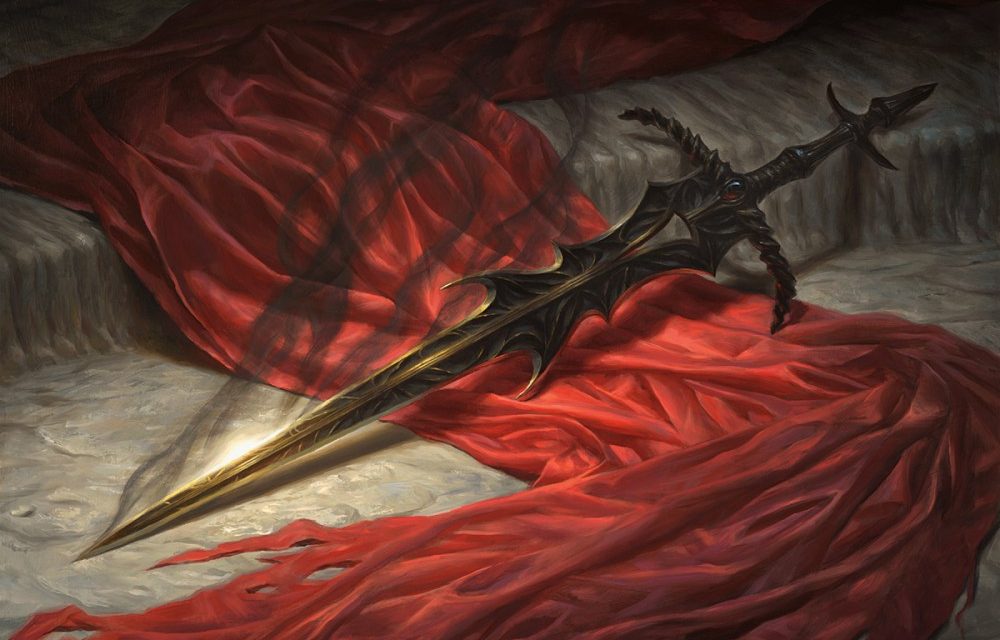

![Can Druids Wear Metal Armor? [Answered]](https://tabletopjoab.com/wp-content/uploads/2021/01/elf-druid-dungeons-and-dragons-440x264.jpg)
